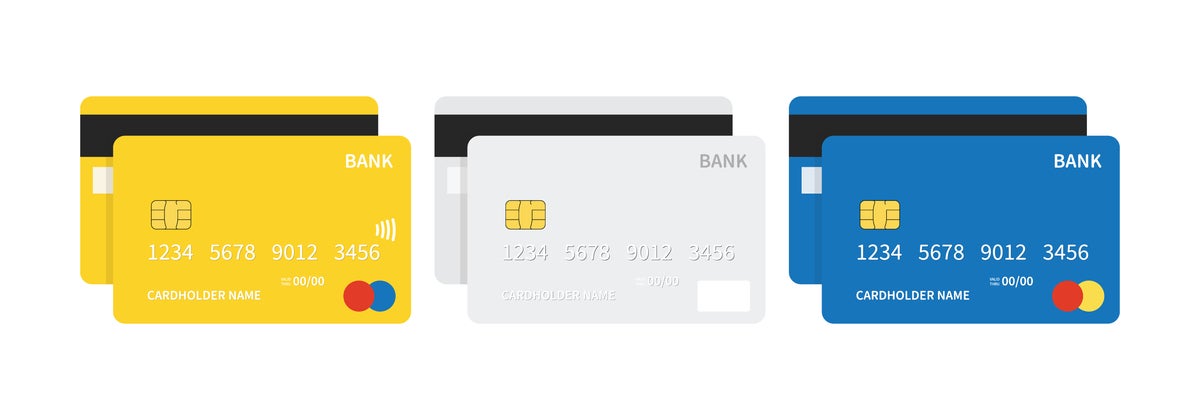A credit card can be a great financial tool. When used responsibly, of course. But is your credit card giving you the best value for your financial needs? Or, if you’re finding it tough to keep on top of your credit card bills, could a balance transfer be a way to help reduce your debt?
Canstar looks at how to switch credit cards, and when you should consider it:
Why switch credit cards?
There are a number of good reasons why it could be a good idea to switch credit cards:
You’re on the wrong type of card for your needs
The first thing to understand about credit cards is that they’re not all the same, and they serve different needs:
- Low rate cards – If you struggle to pay off your credit card bill in full each month and carry over debt from month to month you’ll be paying interest. So you want the lowest rate possible.
- Low fee cards – A low fee card is ideal for an occasional credit card user who always pays down their balance. Since you won’t use the card often, you don’t want to be paying fees for having the card.
- Rewards cards – Great for those who spend within their limits, and use their credit cards for all their everyday purchases with the aim of accumulating rewards. These come with higher rates, so it’s important you pay off the balance before interest is charged.
- Flight rewards cards – Ideal for those who employ the above strategy, but who travel often and prefer flight-related rewards.
Getting the most from your credit card involves having the right card. If you’re struggling to pay off your balance, and are using a rewards card, you could be getting hit with higher interest rates than you need to. Likewise, if you’re putting everything on your card and repaying it each month, are you getting the full rewards benefits possible? Or, if you only use your credit card for the odd big expense, is there are zero-fee card available?
→Related article: What Type of Credit Card Should I Get?
You can get a better interest rate
Even if you have a low rate card, it may not be the lowest. Credit card companies regularly change their interest rates, so it’s important you compare credit card providers to find the best rates available.
Importantly, your credit score will play a big part in the interest rate offered. So even if you got the best rate when you took out your credit card, if your credit score has improved since then, you could be eligible for better rates.
You can get better rewards
On the other hand, you may find another credit card that offers better rewards. Credit card providers often have their own points system, so it may take a little research to find which has the best dollar value rewards.
For example, one card might offer one point for every dollar spent. While another might offer one point for every $100.
Keep in mind, that this doesn’t have to be with a new provider. You may find that you can get better value from upgrading from your current rewards card to a platinum rewards card from the same provider.
To take advantage of balance transfers
Credit card balance transfers can be a useful tool to better manage credit card debt. A credit card balance transfer involves transferring from one card to another to take advantage of special interest rates.
These special interest rates are typically offered for a set period, such as six months.
The idea is that you pay off as much as possible of your balance during the discounted interest period, so that by the time your card returns to its normal interest rate, you have a lower balance, thus reducing the amount of interest you have to pay.
For example:
- Your current credit card has a balance of $10,000 and an interest rate of 7%
- You transfer to a new card that comes with no interest for six months
- During these six months, you pay off as much of your balance as possible
- After six months the new card reverts to a 7% interest rate, only now your balance is much lower, as are your interest charges
It’s important to be mindful that if you’re considering a balance transfer, you’re likely struggling to manage your credit card debt. While a balance transfer can help tackle this, it can also open you up to further temptation.
When transferring credit card balances, make sure you close your old account. And try not to add any additional spending to your new credit card. Rather, focus on tackling as much of the outstanding balance as possible.
→Related article: What is a credit card balance transfer & when would you use it?
Compare Credit Cards with Canstar
If you’re currently comparing credit cards, the comparison table below displays some of the low-rate credit cards currently available on Canstar’s database for Kiwis looking to spend around $2000 per month (some may have links to providers’ websites). The products are sorted by Star Rating (highest to lowest), followed by provider name (alphabetical). Use Canstar’s credit card comparison selector to view a wider range of credit cards. Canstar may earn a fee for referrals.
Things to consider before you switch credit cards
Switching credit cards can be a great way to get a better deal on your credit card. Whether a balance transfer or not. But there are certain things that should be considered first:
- The fees – There can be fees involved when switching credit card accounts. You may find these fees are significant, which could impact any value switching. This is especially true if doing a balance transfer.
- Credit cards can be good and bad – Credit cards can help you manage debt or make the most out of your spending. But they can also just lead to debt. Make sure that you consider all your options, and your savings goals, before applying for any new credit cards.
- Credit checks – When opening a new credit card you may be subject to a credit check. This can cause a dip in your credit score. While temporary, it should be taken into account if you intend to apply for a personal loan or home loan in the near future.
- If applying for a balance transfer – Consider the interest rate the card will revert to after the initial interest-free (or low interest) period plus any ongoing costs
How to switch credit cards
If you’re simply looking to switch cards
Once you’ve decided on your new card, you can make an application for a new card with that provider. You can usually apply online, by phone or in person at a bank branch. If accepted, your new provider will then activate your new card, or provide you with the information to undergo the steps yourself.
Make sure you pay off your old card’s balance and close the account. Even if you don’t intend to use the card anymore, leaving the account open could hurt your credit score and/or cost you in ongoing fees.
If you’re looking to do a balance transfer
First, you’ll need to make an application to the new credit card issuer, as above. Your new prospective issuer will tell you what information it needs, but it’ll likely include:
- The issuer of your current card
- The type of card
- Account number
- The balance you wish to transfer
If your balance transfer request is approved, your new credit card provider will send you your new card. You’ll then need to follow the given steps to activate it.
Once activated, your provider should automatically complete the transfer for you. That means the new credit card provider will post a payment directly to your old account for the amount approved. Then, that payment amount (plus any balance transfer fees) will show up as an outstanding balance on the new account.
While your new provider can do the balance transfer for you, you may need to close your old account once the balance has been transferred.
Compare credit cards with Canstar
Credit cards can be a great financial tool. But it’s crucial you get the right card for your needs. Whether that’s the card that comes with the best rewards, or the lowest interest rate. Here at Canstar we compare a range of credit cards. So you can see which offers the best interest rates, or the best rewards, along with annual fees and our Canstar star rating.
We also release our annual awards, awarding the best cards for each category. To learn more, or to start comparing credit cards, click the button below:

About the author of this page
This report was written by Canstar Content Producer, Andrew Broadley. Andrew is an experienced writer with a wide range of industry experience. Starting out, he cut his teeth working as a writer for print and online magazines, and he has worked in both journalism and editorial roles. His content has covered lifestyle and culture, marketing and, more recently, finance for Canstar.
Enjoy reading this article?
You can like us on Facebook and get social, or sign up to receive more news like this straight to your inbox.
By subscribing you agree to the Canstar Privacy Policy




Share this article